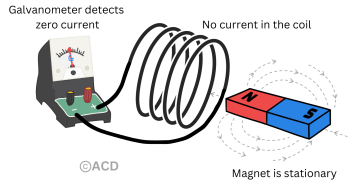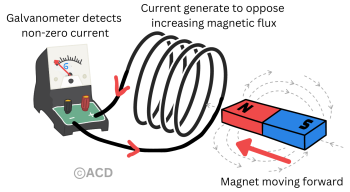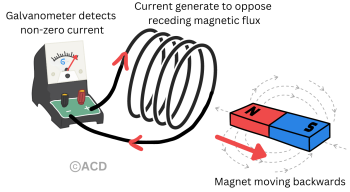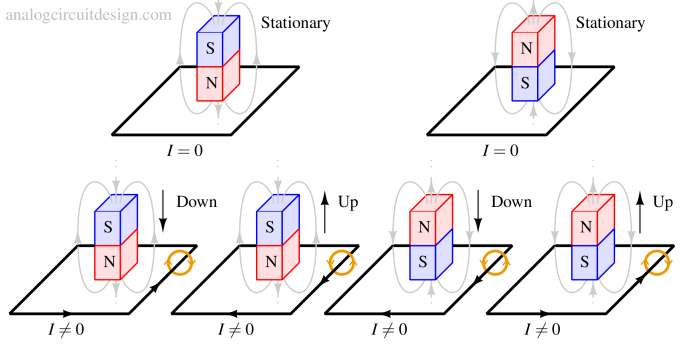Faraday's law of induction
Introduction¶
Faraday's law of electromagnetic induction is a fundamental principle in electromagnetism, formulated by the British scientist Michael Faraday in the early 19th century. It describes the relationship between a changing magnetic field and the induction of voltage in an electrical circuit.
Faraday's law of electromagnetic induction has two main laws. The first law describes the induction of emf in a conductor and the second law quantifies the emf produced in the conductor.
The first law of electromagnetic induction¶
Whenever a conductor is placed in a varying magnetic field, a volatage is induced. If the conductor circuit is closed, a current is induced, which is called induced current. The change could be produced by changing the magnetic field strength, moving a magnet toward or away from the coil, moving the coil into or out of the magnetic field, rotating the coil relative to the magnet, etc.



The second law of electromagnetic induction¶
The induced voltage is proportional to the rate of change of magnetic flux (dφ/dt) through the loop. The direction of the induced current is such that it opposes the change in magnetic flux that produced it, following Lenz's law. Mathematically, this can be expressed as:
$$V=\cfrac{d\phi{}}{dt}$$
Lenz's law¶
Lenz’s law states that the direction of the electric current induced in a conductor by an external changing magnetic field is such that the magnetic field created by the induced current opposes changes in the external magnetic field. The direction of the induced current can be derived from Fleming's right-hand thumb rule.

Direction of current using Lenz's law¶
Using this law, one can predict the electric current’s direction induced by the external magnetic field. In Faraday’s law of induction, Lenz’s law adds the negative sign. This brings completeness to Faraday's law of induction.
$$V=-\cfrac{d\phi{}}{dt}$$
Faraday's experiments¶
Faraday made a coil by wrapping a paper cylinder with wire. He connected the coil to a galvanometer and then moved a magnet back and forth inside the cylinder. When the magnet moves back and forth, the galvanometer needle moves, indicating that a current is induced in the coil. Important to note that the needle immediately returns to zero when the magnet is not moving. Faraday confirmed that a moving magnetic field is necessary in order for electromagnetic induction to occur.